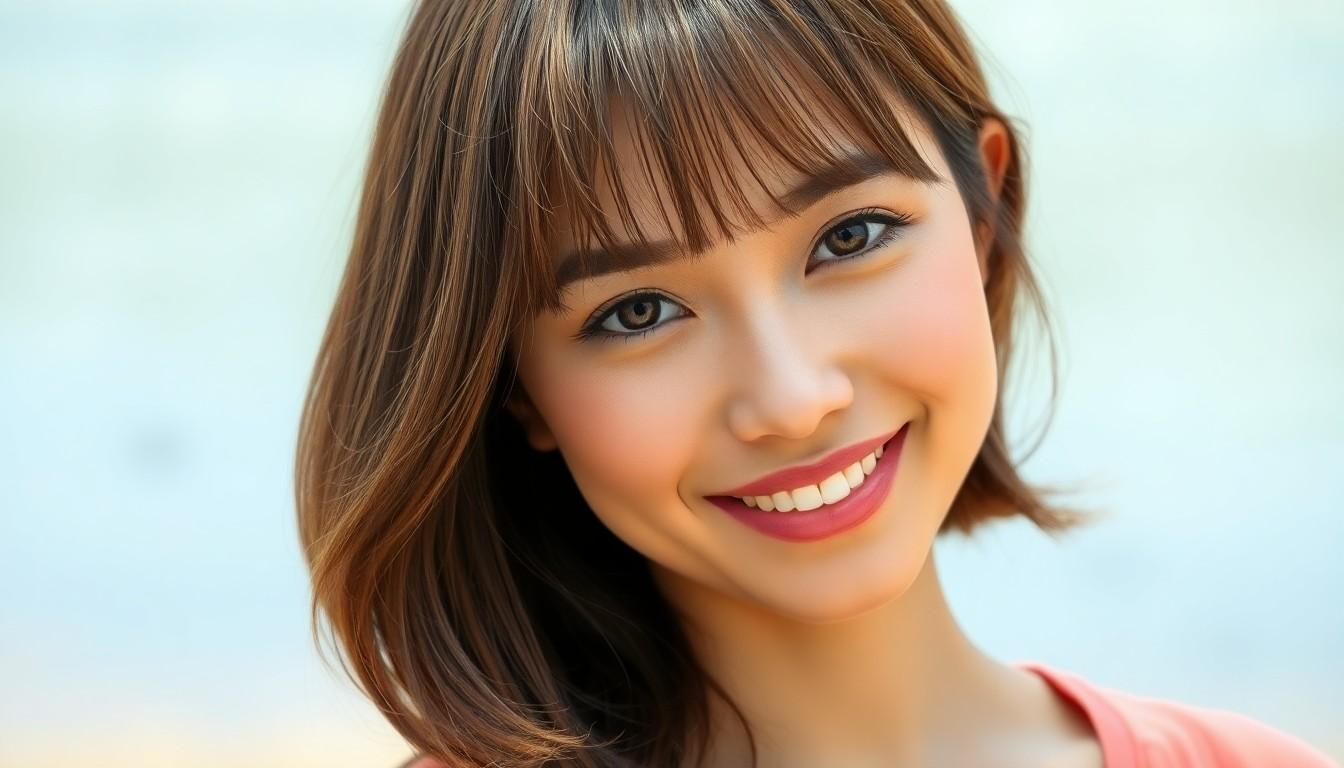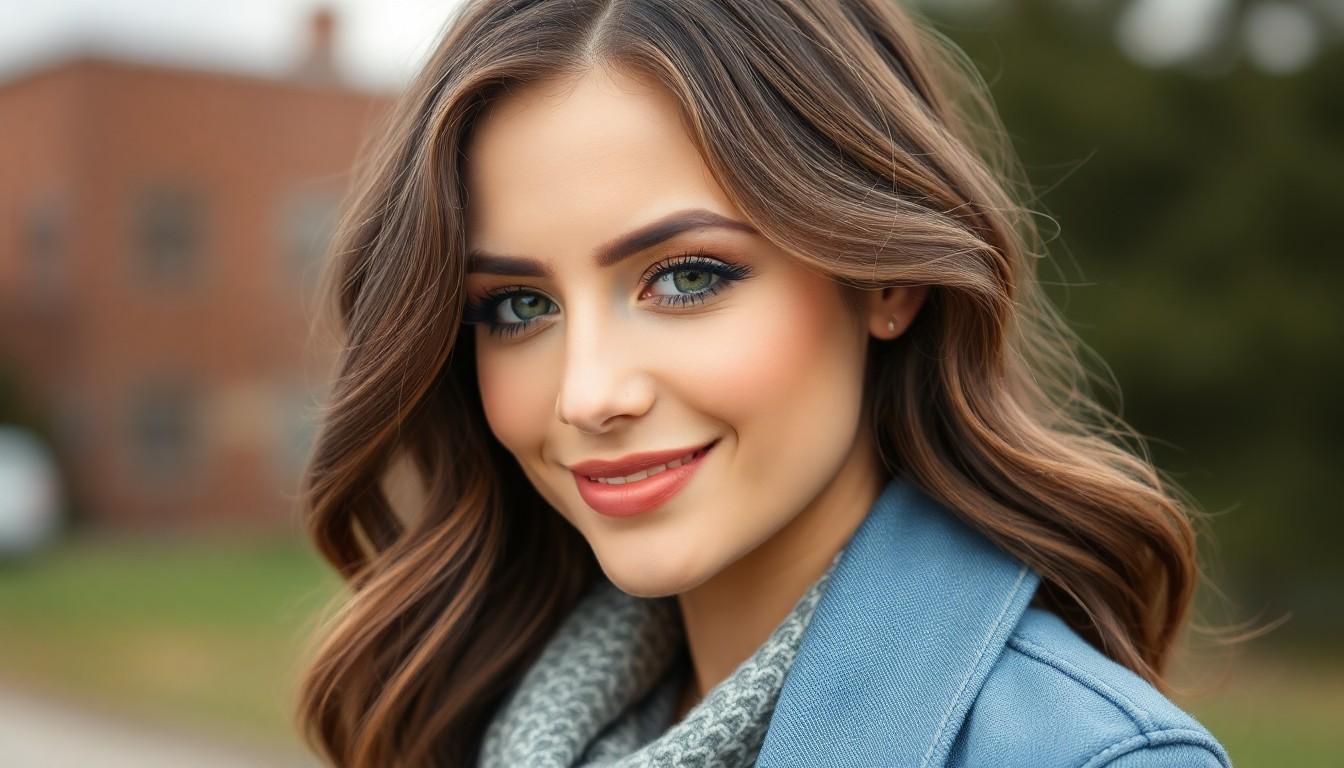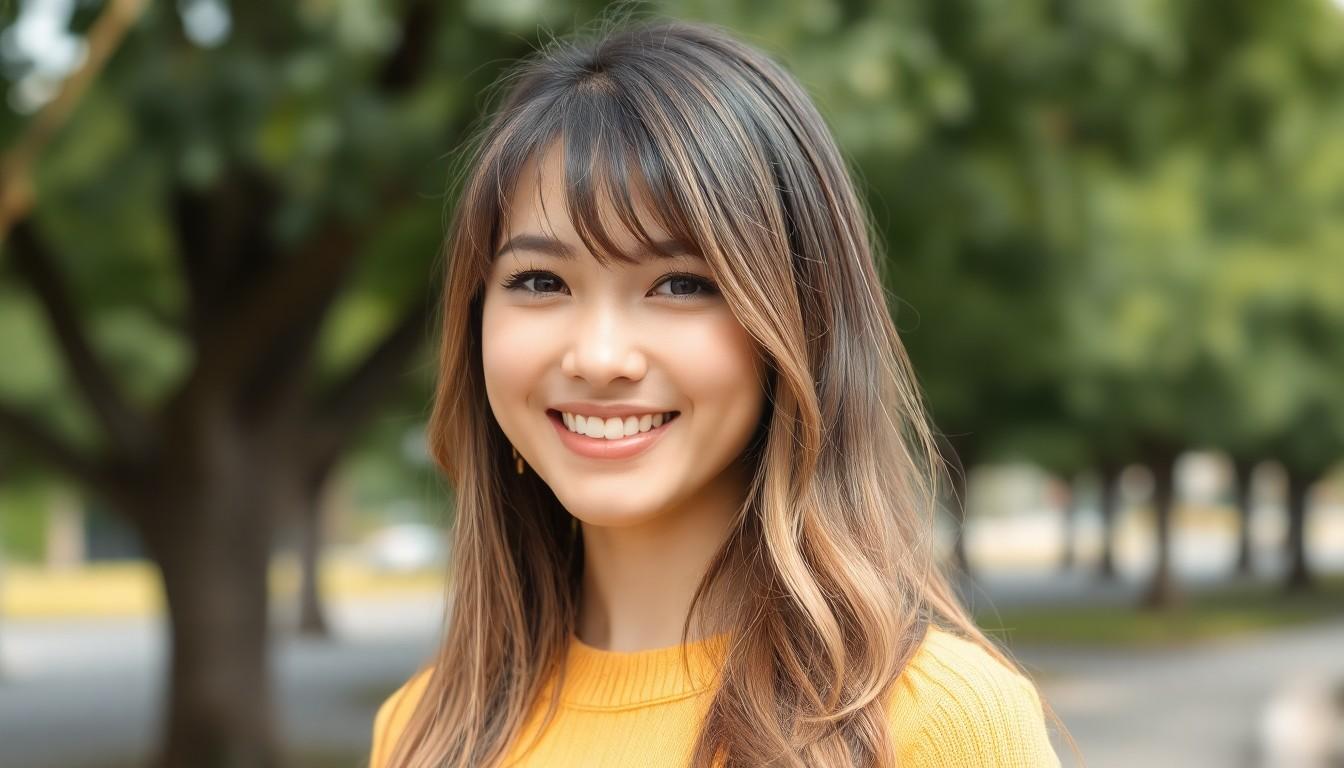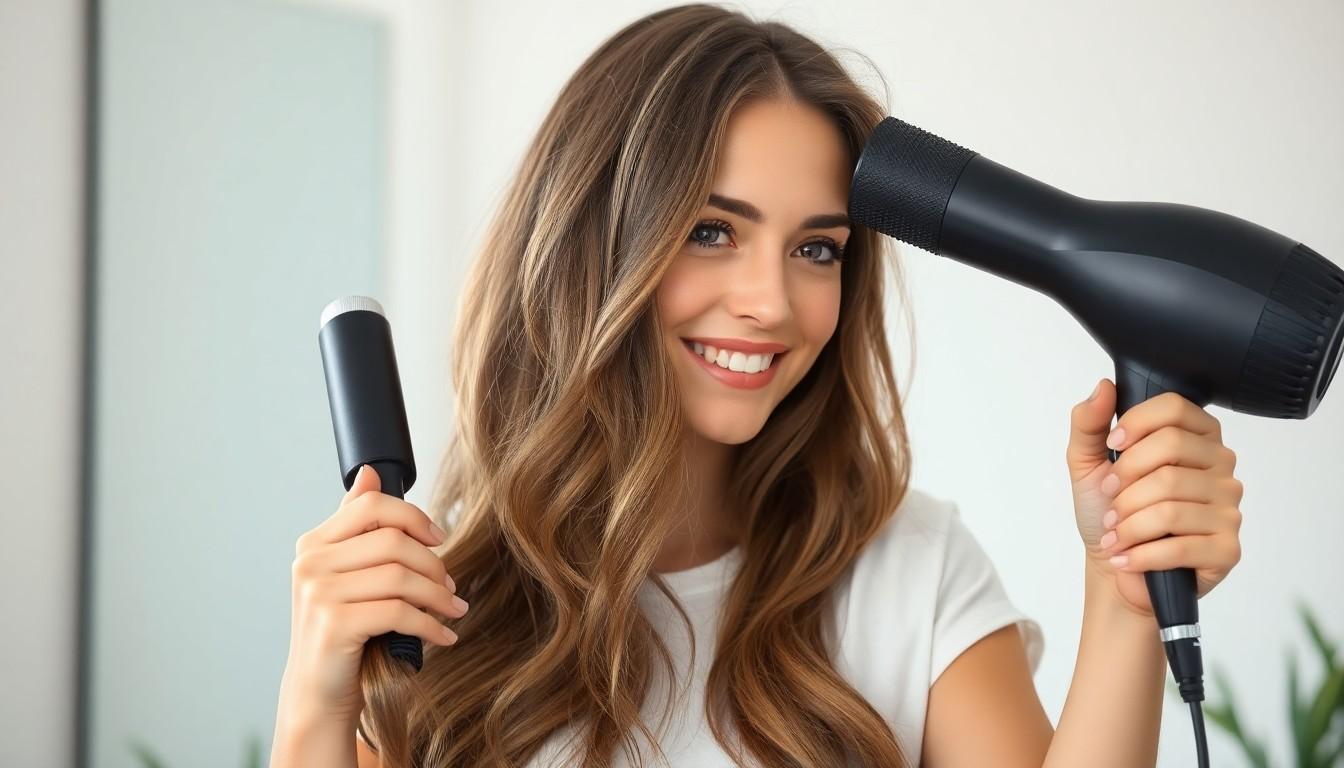We all want that perfect hairstyle that highlights our best features and gives us a boost of confidence. Face framing hairstyles do exactly that—drawing attention to our eyes, cheekbones, and jawline in the most flattering way. With just a few well-placed layers or soft bangs, we can transform our look and make our favorite features pop.
Whether we’re after a fresh new vibe or just want to update our current cut, face framing styles offer endless possibilities. It’s amazing how a simple change around our face can make us feel more stylish and put-together. Let’s explore why these hairstyles are the secret weapon for anyone ready to fall in love with their hair all over again.
Understanding Face Framing Hairstyles
Let’s break down what makes face framing hairstyles such a game changer. We see them creating soft angles that highlight our favorite features like the eyes and cheekbones. Shape matters because the right layers or bangs guide attention where we want it, giving our faces a naturally balanced look. Stylists often use techniques like graduated layering, where longer and shorter sections blend in ways that flatter every face shape. You might notice these styles can be subtle, with wispy pieces around the temples, or bold, with defined curtain bangs that contour our jawline. Every cut aims to customize, so the final look complements our unique bone structure while still reflecting our personal style. By choosing these face framing options, we can instantly update an everyday haircut and ensure that all eyes land exactly where we want them.
Identifying the Best Face Framing Hairstyles for Every Face Shape

Let’s talk through the most flattering options for every face shape. Our picks balance features and create stunning, face-framing effects that fit right in with your natural bone structure and hair type.
Face Framing for Oval Faces
We get the most styling freedom with oval faces. Butterfly cut face-framing layers work wonders by adding movement—even if we pull all our hair up, those layers create softness around the sides. Face-framing layers with curtain bangs pair effortlessly with our bone structure. These subtle bangs gently highlight cheekbones and draw attention to the eyes, giving a fresh and put-together vibe.
Face Framing for Round Faces
Full fringe with face-framing layers gives a round face extra length and new angles. By elongating the profile, we keep our look sleek and modern, but regular trims are a must to avoid split ends. A razor bob with face-framing pieces shapes the cheeks and jawline beautifully. Texture and movement from this cut help our faces appear slimmer and more defined.
Face Framing for Square Faces
Softness matters most with a square face. Curly face-framing layers create gentle curves and soften strong jawlines. Dry cuts work best here to maintain our natural curl pattern and layer precision. Adding light and bright highlights through the mid-lengths and ends diffuses harsh lines. These subtle pops of color shift focus up and balance the overall shape.
Face Framing for Heart-Shaped Faces
Curtain bangs teamed with face-framing layers work perfectly for heart-shaped faces. These bangs draw eyes downward and balance a broad forehead, making us look harmonious and proportionate. For special occasions, curled updos with a few wavy tendrils left loose around the face create an elegant, balanced frame that accentuates the jaw and chin.
Choosing Face Framing Layers for Different Hair Types

Face-framing layers work their magic with every hair texture, but going with the right approach makes all the difference. We’ll break down what works best for straight, wavy, curly, fine, and thick hair so everyone gets the most flattering result.
Face Framing Layers for Straight Hair
We find that straight hair gains movement when we add layers longer than bangs yet shorter than the main length. Going for these mid-length pieces around the face brings more dimension and helps avoid a flat look. Bright highlights next to these layers can really make facial features stand out.
Face Framing Layers for Wavy Hair
Our wavy-haired friends benefit hugely from face-framing layers that echo their natural wave. Placing these layers to flow with the wave gives a softer, more effortless feel. Styling with a light, fluffy blowout can lift the waves and showcase the frame around the face perfectly.
Face Framing Layers for Curly Hair
Most curly styles need a bit of thought, so we prefer a dry cut to carve out face-framing layers. Cutting curl-by-curl lets us keep the pattern intact and avoids any awkward shrinkage. This method keeps volume just right and makes sure curls bounce attractively around the face.
Face Framing Layers for Fine Hair
Those with fine hair love how face-framing layers instantly boost volume. Carefully placed layers near the front pull attention to our eyes and cheekbones, acting almost like a mini facelift. Adding more texture with these layers gives the hair a fuller, airier appearance every day.
Face Framing Layers for Thick Hair
We know thick hair can feel heavy, so we use face-framing layers to lighten things up. Having these layers carved out strategically helps distribute bulk and brings a sleeker finish. Trying a razor bob with face-framing pieces delivers tons of movement and keeps thicker hair lively without overwhelming the face.
Exploring Popular Face Framing Hairstyles Trends

Face framing hairstyles are all about bringing out the best features with strategic layers and fresh highlights. We see these trends evolving each season, with different techniques making their mark on everything from curtain bangs to textured shags.
Curtain Bangs With Face Framing Highlights
We love how curtain bangs paired with soft face-framing highlights add instant brightness to our look. This combo draws attention to the eyes, letting natural light bounce around the brows and cheekbones. Stylists often recommend regular touch-ups to keep bangs at just the right length and prevent split ends. Adding highlights not only complements the cut but also makes our features pop without extra styling time.
Long Layers With Face Framing Pieces
Long layers with shorter pieces around the face are a go-to for anyone wanting movement without sacrificing length. When we lighten hair from the mid-lengths to the ends, the effect creates gorgeous definition along our jawline and cheek area. These layers work on both thick and fine hair types, allowing us to play up our favorite features with minimal fuss. The added movement helps keep styles looking soft and natural.
Bob Hairstyles With Face Framing Angles
For those of us wanting a chic yet versatile look, the razor bob with face-framing angles is a fantastic choice. Razor cutting adds texture and ever-changing movement, shaping the hair to contour our particular face shape. This technique suits both straight and wavy hair, giving volume while drawing attention to the eyes and lips. Face-framing angles make bobs sultry but still easy to maintain, especially for busy days.
Shag Haircuts With Face Framing Texture
Shag haircuts get a modern lift with well-placed face-framing layers. Our stylists often cut these layers around the cheekbones and temples, which creates balance and instant edge. Texture added through layering helps highlight our bone structure, and the style works beautifully with both straight and curly hair. By contouring with hair instead of makeup, we achieve bold, unmistakable movement around our face every day.
Styling Tips for Perfect Face Framing Results

Let’s get the most out of our face framing hairstyles with a few expert styling strategies. The right tools, products, and simple techniques keep our layers fresh, flattering, and perfectly polished.
Best Tools and Products for Face Framing Hair
Having the right items in our kit makes every step easier. We often reach for a round brush to help shape and lift our face-framing layers during a blowout, giving extra volume right where we want it. For those shiny or wavy finishes, a curling iron or flat iron gives us the power to define or smooth the layers around our face.
Hydrating hair masks, like Matrix’s Food For Soft Rich Hydrating Treatment Mask, keep our hair healthy especially if we lighten or highlight our front pieces. Our styles always last longer with a solid hairspray like Redken Control Addict 28 Strong Hold Hairspray that won’t weigh hair down. Sometimes, we finish with a texturizing spray or dry shampoo at the roots for that extra fullness and staying power.
| Tool/Product | Purpose | Example |
|---|---|---|
| Round brush | Adds volume and shape | Medium-barrel for longer layers |
| Curling iron/flat iron | Creates waves or smooth texture | 1-inch barrel for soft face framers |
| Hydrating mask | Nourishes and protects color-treated hair | Matrix’s Food For Soft Hydrating Mask |
| Strong hold hairspray | Locks style in place | Redken Control Addict 28 |
| Texturizing spray/dry shampoo | Boosts volume and texture | Used on roots for finishing touch |
Step-By-Step Guide to Styling Face Framing Layers
We always start with towel-dried, freshly washed hair. Applying a lightweight serum or a nourishing styling cream helps tame frizz and add shine to our face-framing pieces.
After prepping, we pick up our round brush and aim our blow dryer at the roots, lifting the shorter front layers first for maximum bounce. Setting the style with a cool shot locks in that flawless movement. Those of us with curly hair grab a diffuser or just let those curls air-dry, then scrunch in a curl-defining mousse to keep everything springy and separated. On straight or wavy days, we sometimes take a flat iron or curling iron and gently add waves or bends, focusing on the shorter pieces around our face.
A light mist of hairspray holds everything in place without making our hair stiff. For a boost in volume or a messier texture, we might add a bit of texturizing spray, especially around the crown and sides.
We never skip regular trims, especially to keep those face-framing layers crisp and split-end free. Anyone with curtain bangs or a full fringe touches up the length every few weeks so the whole look stays intentional and brightens our features day after day.
Maintaining Face Framing Hairstyles at Home

Keeping our face framing hairstyles looking fresh at home isn’t complicated when we stick to a few smart habits. Let’s walk through what matters most for healthy, stylish layers and touchable texture.
Frequency of Trims and Upkeep
Visiting our stylist regularly is the simplest way to maintain crisp, balanced face-framing layers. Styles like curtain bangs or a full fringe usually need a tidy-up every few weeks so the length stays flattering and split ends are kept at bay. For most face-framing cuts with soft layers, we should aim for a trim every 6 to 8 weeks. This timing helps our layers maintain definition and prevents them from becoming uneven as they grow out. Skipping trims too often leads to lost shape and hair that’s harder to style.
| Face Framing Style | Trim Frequency | Notes |
|---|---|---|
| Curtain Bangs/Full Fringe | Every 2-4 weeks | Keeps bangs at a wearable length |
| General Face-Framing Layers | Every 6-8 weeks | Maintains defined shape and healthy ends |
DIY Tips for Touching Up Face Framing Layers
Sticking to the basics matters most when we’re managing our hair at home. Using a hydrating mask, like Matrix’s Food For Soft Rich Hydrating Treatment Mask, nourishes and softens our layers, especially if we style them often. For curly hair, booking a professional dry cut first is smart because it preserves the curl pattern and defines each layer.
When we’re tempted to trim at home, it’s best to only snip away minor split ends or stray hairs. Reaching for high-quality trimming tools makes a difference, but we want to avoid changing the overall shape—face-framing layers are best shaped by our stylist. Hydration must stay part of our routine; regular masks prevent dryness and breakage.
Blowouts and curling tools boost the movement and bounce in trendy styles like the butterfly cut. For quick styling, styling creams and light texturizers let our face-framing pieces pop. Pulling a few strands loose when creating an updo or braided crown keeps our look soft and flattering. Adding well-placed highlights around our face, done professionally, gives a bright, modern finish without risking uneven color at home.
Following these steps lets us extend the life of our face-framing hairstyle until we’re ready for our next salon visit, all while keeping hair healthy and full of movement.
Conclusion
Choosing the right face framing hairstyle lets us highlight our favorite features and express our personal style with confidence. Whether we’re after a subtle update or a bold transformation these styles offer endless possibilities for every hair type and face shape.
By working with a skilled stylist and following a simple care routine we can keep our face framing layers looking fresh and stylish. It’s all about finding the look that makes us feel our best every day.
Frequently Asked Questions
What are face framing hairstyles?
Face framing hairstyles refer to haircuts that use layers, bangs, or angles around the face to highlight your features. These styles draw attention to areas like the eyes, cheekbones, and jawline, creating a flattering, balanced appearance.
Why are face framing hairstyles so popular?
Face framing hairstyles are popular because they enhance facial features, add style, and suit various face shapes and hair types. They provide a fresh update to any cut, making you look more polished and boosting confidence.
Which face framing style is best for my face shape?
For oval faces, curtain bangs and soft layers work well. Round faces benefit from full fringes and razor bobs, square faces look great with curly layers, and heart-shaped faces suit curtain bangs and layered cuts that add balance.
Can face framing layers work with any hair type?
Yes, face framing layers can be tailored to any hair type. Straight hair gains movement, wavy hair looks effortless, curls stay bouncy with the right cut, and fine or thick hair can both be enhanced by strategic layering.
What is the difference between curtain bangs and regular bangs?
Curtain bangs are parted down the middle and frame both sides of the face, creating a soft, contouring effect. Regular bangs are cut straight across the forehead and offer a more uniform, classic look.
How do I maintain face framing hairstyles at home?
Maintain these styles with regular trims every 6–8 weeks, or 2–4 weeks for bangs. Use hydrating hair masks, avoid over-styling, and use a blow dryer or curling iron to refresh layers and add movement as needed.
What are the latest trends in face framing hairstyles?
Current trends include curtain bangs with face-framing highlights, long layers with shorter face pieces, razor bobs with angled sections, and updated shags with texturized, bold layers for added movement and style.
Are face framing hairstyles high maintenance?
Face framing hairstyles generally require more frequent trims than a one-length cut, especially for bangs. However, with proper care, including hydrating treatments and regular styling, upkeep is simple and manageable.
How do I style face framing layers for the best results?
Start with towel-dried hair, apply heat protectant, and use a round brush for volume. Blow dry the layers away from your face and add finishing touches with a curling or flat iron. Set the style with lightweight hairspray.
Will face framing layers make my hair look thinner or thicker?
Face framing layers can be customized to your hair type. Strategic layering can add the appearance of volume to fine hair, while for thicker hair, layers help to remove bulk and add movement without losing length.







